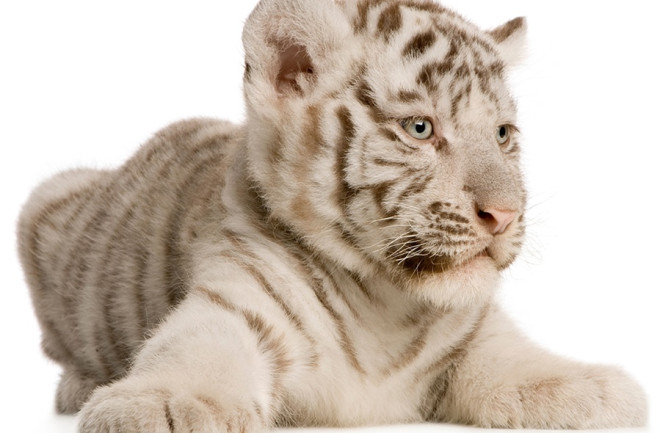The first thing to know about big cats: There’s no official definition of the term big cats.
In the 19th century, anatomist Richard Owen separated the family Felidae into “roarers” and “purrers.” Today, based on that distinction, some definitions consider cats “big” only if they roar — that’s lions, tigers, jaguars and leopards.
Owen thought that the different vocalizations stem from the anatomy of the hyoid, which supports the larynx and tongue. In purrers, this structure is rigid. In roarers, it’s more flexible.
Asia’s snow leopards defy that neat sorting, however. Despite having a flexible hyoid, the stealthy cats that locals call “ghosts of the mountain” don’t roar.
Researchers now think a pad of elastic tissue on the vocal folds, present only in roarers, explains the different vocalizations.
Other definitions group big cats by size and add clouded leopards, cheetahs, snow leopards and cougars. The biggest of the big: the tiger, which can stretch up to 13 feet long.
Size advantage aside, tigers generally don’t pose a threat to humans. The tigers of the brackish Sundarbans mangrove forest in Bangladesh are an exception, killing more than 20 people each year.
In the 1970s, a German biologist suggested that the tigers had liver and kidney damage from drinking salty water, making them irritable and prone to attacking humans. More recent research, however, points to high levels of human activity in tiger territory, setting the stage for deadly encounters.
In what’s now Kenya, two lions infamously known as the Man-Eaters of Tsavo stalked, killed and ate terrified railway workers in 1898. British officer John Patterson, who shot both animals, claimed they took 135 victims.
Modern analysis of the Tsavo lions’ remains, now at Chicago’s Field Museum, suggests the pair actually ate about 35 humans. Researchers determined the reduced body count from chemical ratios in the animals’ tissues, which record dietary details.
A 2017 study of the Tsavo lions and a third man-eater from Zambia indicated that they may have turned to squishier, easier-to-chew human prey due to dental disease and injury.
Life on White/Alamy Stock PhotosLike many male lions in the Tsavo area, the man-eaters were maneless, a possible adaptation to the local climate, which is hotter and drier than the Serengeti.
In other regions, the darker the mane, the hotter the lion — and we’re not talking temps. Lions with darker manes have higher testosterone levels, signaling dominance and increasing their mating successes.
Another familiar color variant is the black panther, but — apologies to T’Challa — there is actually no such species. The term applies generically to any dark, or melanistic, big cats, usually jaguars or leopards.
The slinking, sinister black panther looms large across early American lore, stealing souls and stalking settlers. But, besides occasional jaguars in the extreme Southwest, melanistic big cats have never been documented in the U.S. — across the rest of the nation, the naturally tawny cougar is the only native big cat.
People may have feared cougars, yet it was the cougars that were in danger. Bounty programs in the 19th and early 20th centuries drastically reduced their numbers across North America. Last seen in 1938, the eastern cougar was declared extinct in 2011.
Cougars remained west of the Rockies, though, and documented sightings of solitary cougars in the Midwest have been on the rise in the last 25 years.
Re-establishing cougar numbers could reduce deer overpopulation. In 2016, researchers estimated that the big cats’ presence would cut deer-related car crashes in the eastern U.S. by 22 percent.
Another potential reduction: baby big cats. Most big cat males kill other males’ cubs to send the mother back into estrus faster, so they can sire their own offspring.
Researchers have never observed a case of infanticide among cheetahs, however, possibly because cheetah moms get around: One study found that 43 percent of multiple-cub litters contained cubs sired by different fathers, making it harder for a male to tell which cubs are his own, and thus, less likely to kill. Who said cheetahs never prosper?
20 Things You Didn't Know About ... Big Cats
The tiger is the biggest cat, black panthers are not a species and the real reason two lions became the Man-Eaters of Tsavo.
By Elisa Neckar
Aug 20, 2018 12:00 AMNov 15, 2019 2:54 PM

Imagebroker/Alamy Stock Photo
Newsletter
Sign up for our email newsletter for the latest science news
More From Discover
Stay Curious
Subscribe
To The Magazine
Save up to 40% off the cover price when you subscribe to Discover magazine.
Copyright © 2025 LabX Media Group
